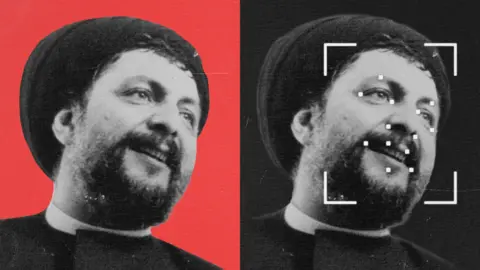A computer scientist at a university in the north of England is studying an image of a corpse - attempting to solve a mystery that has gripped the Middle East for nearly 50 years.
The digitized photo, showing a decomposed face, was originally taken by a journalist who found the body in a secret mortuary in Libya in 2011. The corpse is believed to potentially be that of Musa al-Sadr, who disappeared under mysterious circumstances in 1978.
Sadr's case has become emblematic, stirring conspiracy theories over the years regarding whether he was killed or remains alive, possibly held by the Libyan government. His followers view his disappearance with similar reverence as that of John F. Kennedy's assassination.
Comprising a high-profile figure advocating for marginalized Shia Muslims in Lebanon, Sadr's political influence and mysterious fate resonate strongly with his community. The search for identification of the body is crucial, not merely to solve a personal mystery but to unravel the political and social implications of his disappearance on the region.
While investigating, the BBC World Service team faced risks, including detention in Libya, as the subject remains deeply sensitive.
Despite facing significant challenges, including the deterioration of evidence over decades, recent technological advancements such as facial recognition algorithms are being utilized to analyze the corpse's features against known images of Sadr.
Prof. Hasan Ugail of Bradford University stated that preliminary results from the analysis indicate a high probability that the body could belong to Sadr, raising essential inquiries regarding his reported execution and potential hidden narratives surrounding his legacy.
As the investigation unfolds, it interweaves with ongoing political tensions in Libya and the enduring loyalty of Sadr's followers, underscoring the profound emotional impact of his enigmatic absence.

















